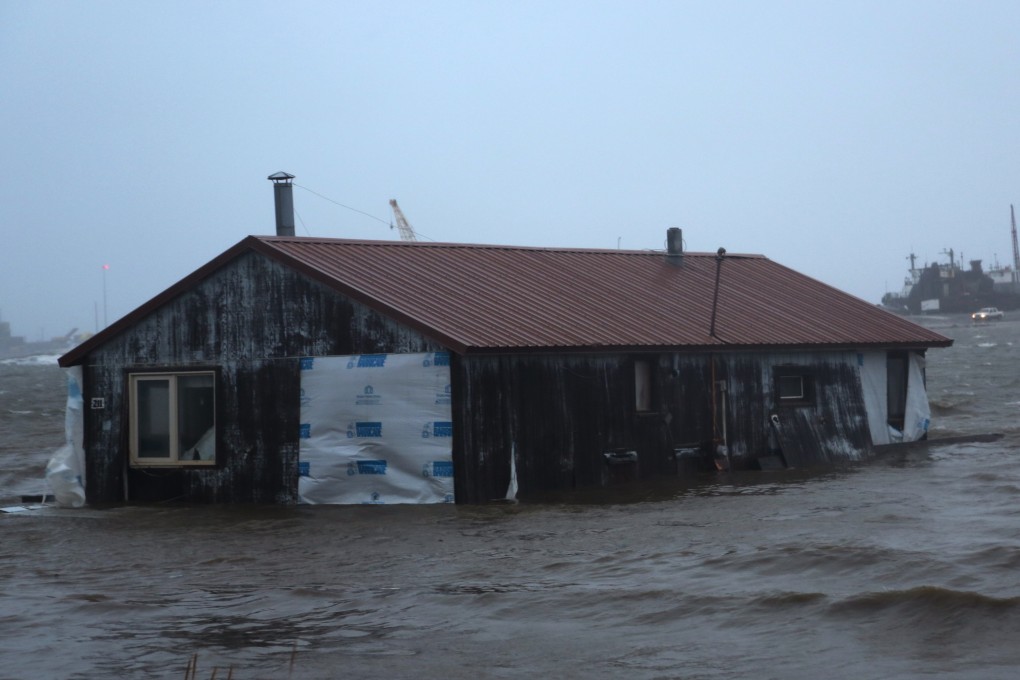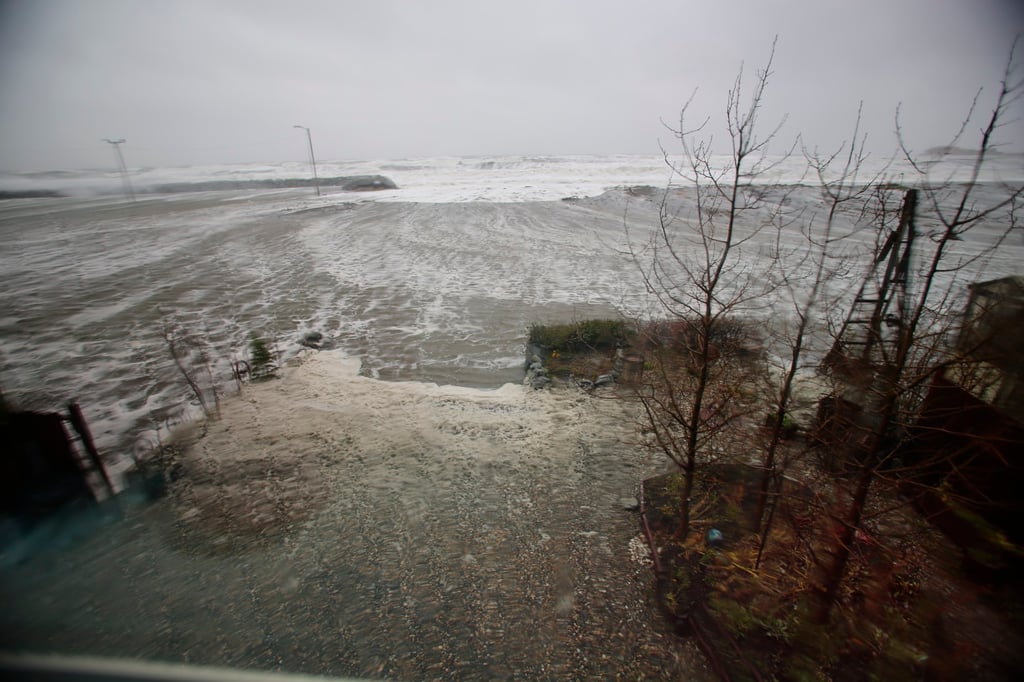Remnants of Typhoon Merbok batters Alaska causing widespread flooding, outages, and knocking homes from their foundations
- Force of the water moved some homes off their foundations, and one house in Nome floated down a river until it got caught at a bridge
- The National Weather Service says some locations could experience the worst coastal flooding in 50 years

A powerful storm sweeping north through the Bering Strait on Saturday caused widespread flooding in several western Alaska coastal communities, knocking out power and sending residents fleeing for higher ground.
The force of the water moved some homes off their foundations, and one house in Nome floated down a river until it got caught at a bridge.
The potent storm – what remains of Typhoon Merbok – has been influencing weather patterns as far away as California, where strong winds and a rare late-summer rainstorm were expected.
In Alaska, no injuries or deaths were immediately reported, said Jeremy Zidek, spokesperson for the Alaska Department of Homeland Security and Emergency Management. Officials had warned some places could see their worst flooding in 50 years and that the high waters could take up to 14 hours to recede.

Governor Mike Dunleavy issued a disaster declaration during the day.